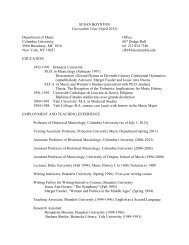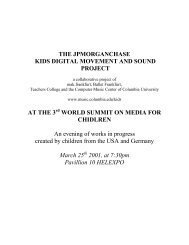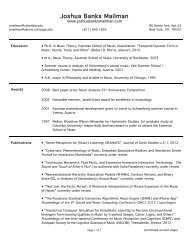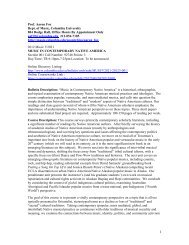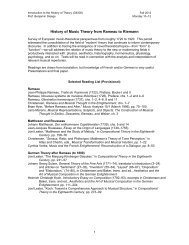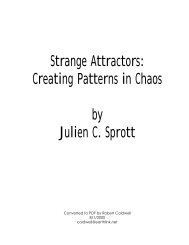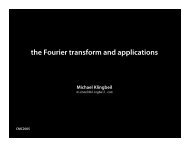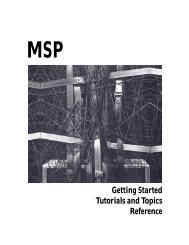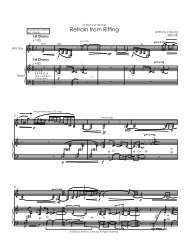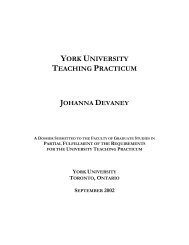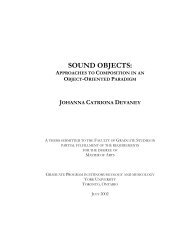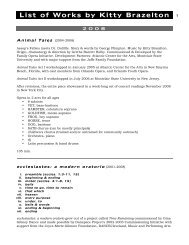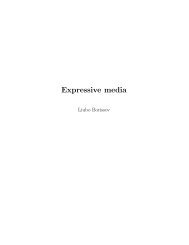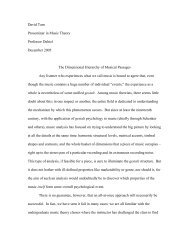Text, including the two scores - Columbia University Department of ...
Text, including the two scores - Columbia University Department of ...
Text, including the two scores - Columbia University Department of ...
You also want an ePaper? Increase the reach of your titles
YUMPU automatically turns print PDFs into web optimized ePapers that Google loves.
esult. I dealt with this empirically, creating large tables <strong>of</strong> results and judging <strong>the</strong> subjective musicality <strong>of</strong> <strong>the</strong> outcome by listening. 1.2.2 Splice <strong>the</strong><br />
‘Splice’ application finds moments <strong>of</strong> maximum spectral similarity to create <strong>the</strong> most seamless possible splice(s) between different sound files. It scans through all <strong>the</strong> files and creates lists <strong>of</strong> splice points, ranked by degree <strong>of</strong> similarity; it <strong>the</strong>n recursively seeks an optimal path through <strong>the</strong>m to create <strong>the</strong> The<br />
audio file. Normally, it takes several input parameters: a list <strong>of</strong> sound files to resulting<br />
a minimum and maximum allowed duration for each slice <strong>of</strong> sound between splices, an optional ‘self-avoidance’ duration (used to avoid cyclical paths), <strong>the</strong> number <strong>of</strong> splices that <strong>the</strong> resulting audio file should contain, and, most importantly, a volume threshold level for splice points. analyze,<br />
volume threshold parameter specifies that a splice may only happen at or above a minimum volume level; this is crucial because (given my comparison rubric) quieter moments are more spectrally similar to each o<strong>the</strong>r than louder moments. Without this parameter (i.e. if <strong>the</strong> threshold were set to This<br />
<strong>the</strong> ‘best’ splice points would always be found at moments <strong>of</strong> silence. The setting <strong>of</strong> this parameter depends on <strong>the</strong> intended effect <strong>of</strong> <strong>the</strong> splice. When set zero),<br />
a low value, <strong>the</strong> splice points are found ‘between <strong>the</strong> notes’; when set at a higher value, only splices at loud moments (i.e. ‘within <strong>the</strong> note’) are allowed (yielding a much more drastic and noticeable effect). The comparison rubric used to judge <strong>the</strong> relative similarity between <strong>two</strong><br />
at<br />
12



